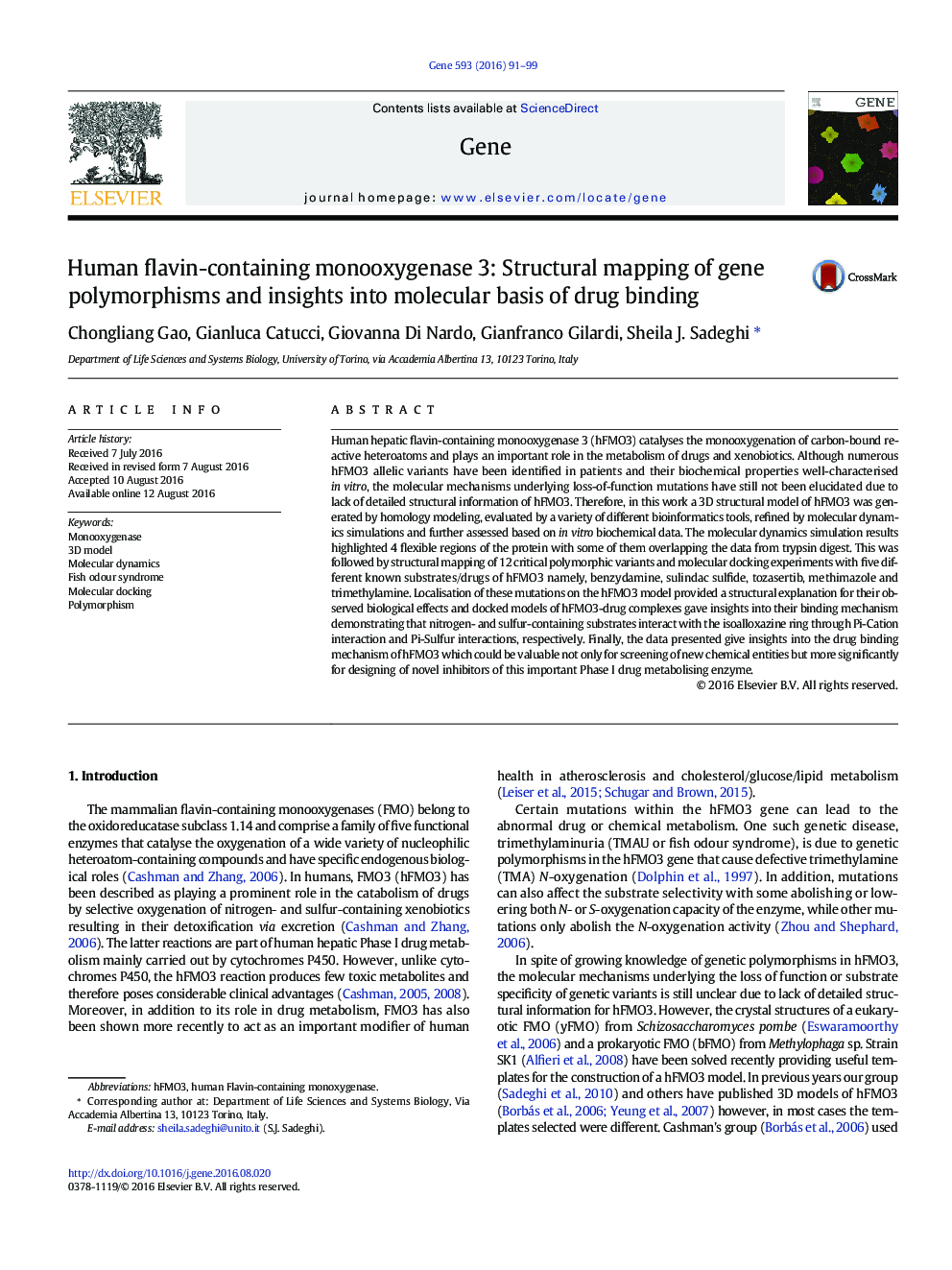| کد مقاله | کد نشریه | سال انتشار | مقاله انگلیسی | نسخه تمام متن |
|---|---|---|---|---|
| 2814739 | 1159827 | 2016 | 9 صفحه PDF | دانلود رایگان |
• Homology modeling of the insert region of hFMO3 with high confidence
• Structural explanations for biological effects of 12 polymorphic variants causing disease
• Identification of four highly flexible regions of hMFO3 by trypsin digestion
• Insights into the molecular basis of drug binding
Human hepatic flavin-containing monooxygenase 3 (hFMO3) catalyses the monooxygenation of carbon-bound reactive heteroatoms and plays an important role in the metabolism of drugs and xenobiotics. Although numerous hFMO3 allelic variants have been identified in patients and their biochemical properties well-characterised in vitro, the molecular mechanisms underlying loss-of-function mutations have still not been elucidated due to lack of detailed structural information of hFMO3. Therefore, in this work a 3D structural model of hFMO3 was generated by homology modeling, evaluated by a variety of different bioinformatics tools, refined by molecular dynamics simulations and further assessed based on in vitro biochemical data. The molecular dynamics simulation results highlighted 4 flexible regions of the protein with some of them overlapping the data from trypsin digest. This was followed by structural mapping of 12 critical polymorphic variants and molecular docking experiments with five different known substrates/drugs of hFMO3 namely, benzydamine, sulindac sulfide, tozasertib, methimazole and trimethylamine. Localisation of these mutations on the hFMO3 model provided a structural explanation for their observed biological effects and docked models of hFMO3-drug complexes gave insights into their binding mechanism demonstrating that nitrogen- and sulfur-containing substrates interact with the isoalloxazine ring through Pi-Cation interaction and Pi-Sulfur interactions, respectively. Finally, the data presented give insights into the drug binding mechanism of hFMO3 which could be valuable not only for screening of new chemical entities but more significantly for designing of novel inhibitors of this important Phase I drug metabolising enzyme.
Journal: Gene - Volume 593, Issue 1, 15 November 2016, Pages 91–99
